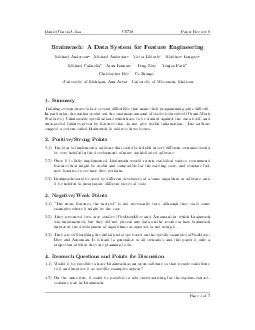PPT-Anderson VMC DPH31G
Author : jane-oiler | Published Date : 2016-03-02
Understanding Histograms Histograms are a graphic representations a picture of the tonal value for each pixel in your photo The horizontal axis of the histogram
Presentation Embed Code
Download Presentation
Download Presentation The PPT/PDF document "Anderson VMC DPH31G" is the property of its rightful owner. Permission is granted to download and print the materials on this website for personal, non-commercial use only, and to display it on your personal computer provided you do not modify the materials and that you retain all copyright notices contained in the materials. By downloading content from our website, you accept the terms of this agreement.
Anderson VMC DPH31G: Transcript
Download Rules Of Document
"Anderson VMC DPH31G"The content belongs to its owner. You may download and print it for personal use, without modification, and keep all copyright notices. By downloading, you agree to these terms.
Related Documents














